How long can you run a gas fireplace? Depending on the type of gas fireplace, you can run your gas fireplace from two to four hours with an automatic timer.
Whether you’re looking for supplemental heating or just for some cozy ambience, a gas fireplace can offer the perfect solution – if you follow the proper safety and maintenance guidelines.
Let’s dive into the types of gas fireplaces, safety measures, and tips to maximize efficiency.
Risks of Overusing a Gas Fireplace
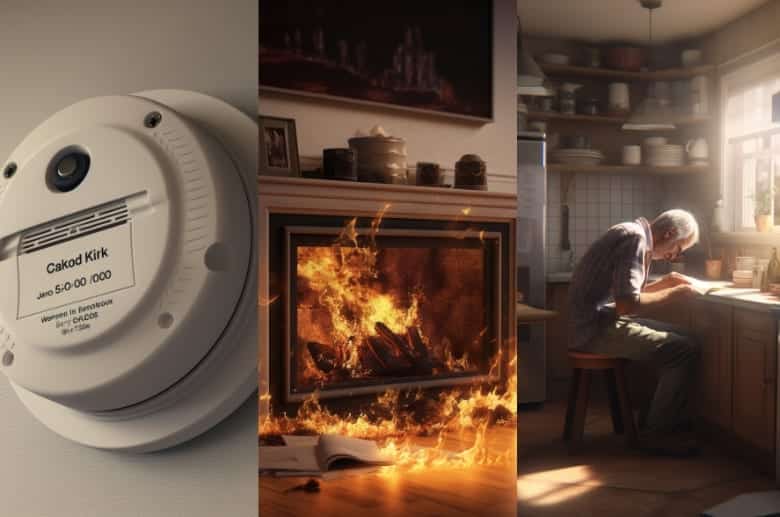
Overusing a gas fireplace can pose risks for you and your home like any other heating source. Here are some of the common risks to consider when running a gas fireplace:
- Carbon Monoxide Poisoning – A running gas fireplace can release carbon monoxide, an odorless and colorless gas that can be deadly if left unchecked. It’s essential to have a carbon monoxide detector near your fireplace and replace its batteries regularly.
- Fire Hazard – If furniture or other combustible items are placed too close to a running gas fireplace, it can cause an increased risk of fire. Keep any flammable objects at least four feet away from the fireplace when it’s in use.
- Poor Indoor Air Quality – If left unchecked, gas fireplaces can contribute to poor indoor air quality. Keeping your unit well-ventilated and using a high-efficiency air filter within the same room can help reduce indoor air pollution.
- Overheated Components – If an appliance operates too long or at too high of a temperature, the fans, motors, and valves in your unit can overheat and become a fire hazard. Follow any instructions with your gas fireplace, as they’ll mention the recommended length of use and other safety precautions.
- Increased Gas Bills – Continuously running a gas fireplace can quickly drive up your utility bills. To avoid this, it’s important to understand the heating efficiency of gas fireplaces and use this knowledge to limit the use of your fireplace whenever possible. This approach helps conserve energy and ensures that you are maximizing the efficiency of your gas fireplace when it’s in operation.
- Excessive Wear and Tear – Overheating components and frequent use can cause premature wear and tear on your gas fireplace. Always take proper safety precautions to prevent unnecessary repairs or replacements.
Don’t be discouraged – with the proper precautions, gas fireplaces can be a great way to keep your home warm and inviting without compromising safety. Following the manufacturer’s instructions for your gas fireplace can go a long way in reducing risk and making sure your family stays safe.
How Long Can You Run a Gas Fireplace?
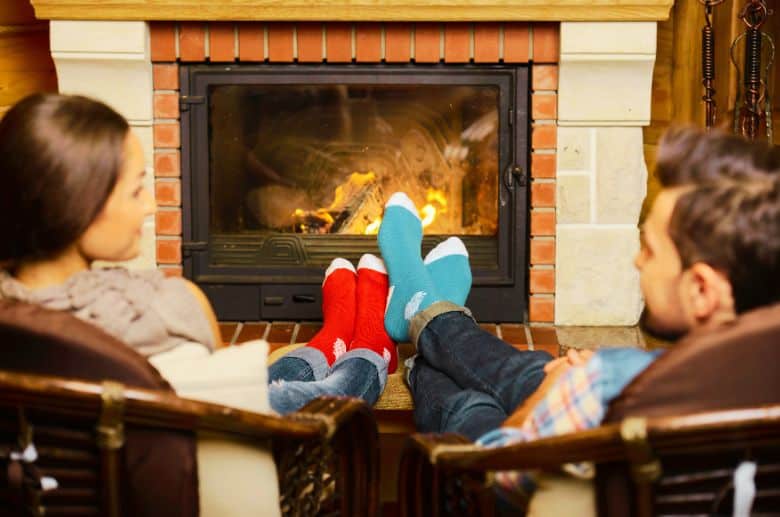
It depends on the type of gas fireplace you have. Still, you can generally run your gas fireplace for anywhere from two to four hours with an automatic timer that will eventually shut it off for safety reasons.
Gas fireplaces come in three primary types: Ventless, Natural B-vent, and Direct Vent. Each type has advantages and nuances when it comes to operation. Here are the basic guidelines that you should follow for each type:
Direct-Vent Gas Fireplace
A Direct-vent gas is great for homeowners who don’t have a pre-existing chimney as it saves them the hassle and cost of installing a new chimney. It uses an exhaust vent that goes directly into an exterior wall and can run continuously as long as the front glass is sealed.
Moreover, direct-vent gas fireplaces have a fireplace glass at the front and a BTU rating as high as 40,000 that making it the perfect unit to heat your space while staying efficient.
An outer pipe pulls fresh air from the outside and provides oxygen for combustion. Carbon Monoxide and other toxic gasses are vented out of the fireplace through the vent.
Unlike conventional masonry fireplaces, direct-vent gas fireplaces are sealed—with no air or toxic fumes coming in or out of your room.
That is why using direct-vent gas fireplaces for days is safe without any risk.
Ventless Gas Fireplace
With a run time of up to six hours, ventless fireplaces are some of the most efficient units. However, this can vary depending on the manufacturer’s instructions, so read them carefully.
Ventless or vent-free gas fireplaces do not use any venting system. There can be serious health and safety risks associated with running it indoors. That is why it is completely illegal in California, while several other states have imposed strict restrictions on its use.
To ensure you get the right size, check with building codes and consider installing a timer to keep your fireplace from running overnight. Ranges vary from 12 to 72 inches, with BTU ratings ranging from 20,000 to 40,000.
If you have a ventless gas fireplace, we recommend not to use it for more than two or three hours. The combustion in ventless gas fireplaces is clean. Still, some amount of Carbon Monoxide and other toxic gasses are produced. Since there is no venting system, the gasses spread inside the room.
The levels of toxic gasses inside the room can rise if you leave the fireplace running for more than a few hours. This increases the chances of CO poisoning, respiratory issues, and other health risks.
B-vent gas fireplace
B-vent gas fireplaces use air present inside the room for combustion. The combustion inside the fireplace produces hot exhaust gasses. Since the exhaust gasses are hot, they rise and vent out through the fireplace venting system.
B-vent gas fireplaces are not sealed so that heat can dissipate outside through the chimney. There’s also a chance that toxic fumes may enter the room because of poor drafting conditions.
This model can be used safely for several hours at a time, although it’s best to double-check with the manufacturer and have a carbon monoxide detector nearby. Because these fireplaces are not sealed, they can lead to heat loss and pose a risk of carbon monoxide exposure if left unattended overnight.
They can have up to 78,000 BTUs and help provide an extra layer of warmth during colder nights.
——
Do You Need to Hire Chimney & Fireplace Expert?
Get free quotes from qualified experts near you. No commitment required!
——
Key Factors Shaping Your Gas Fireplace’s Runtime
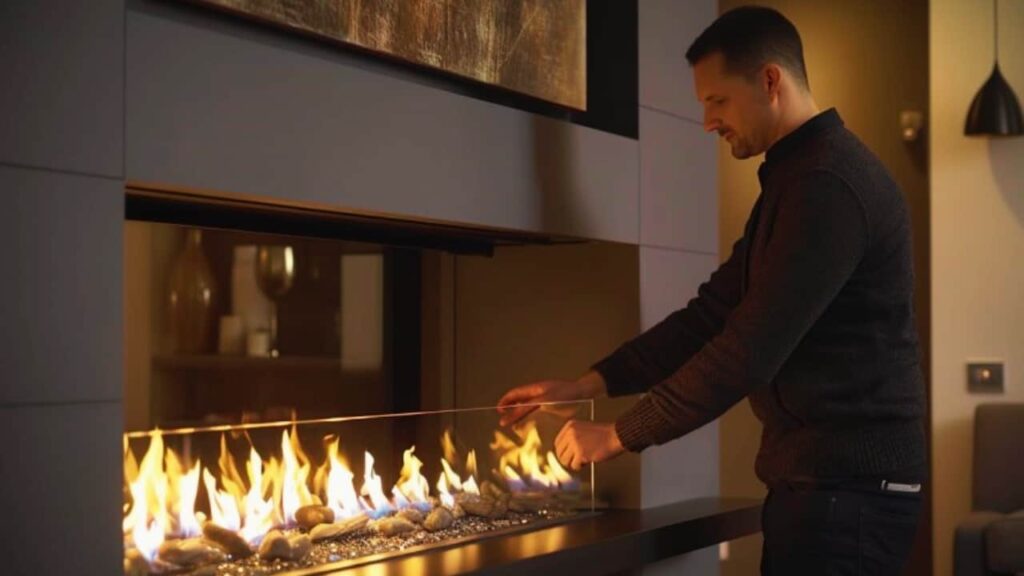
We all want to get the most out of our gas fireplace, but several factors can play a role in determining your unit’s runtime. Make sure to consider the following:
Gas Fireplace Model and Size – Did you know that the type and size of your gas fireplace can play a part in how long it runs? Specific models and sizes tend to be more efficient than others, so do your research before selecting your unit.
Fuel Type – Are you using natural gas or propane to fuel your fireplace? Propane is ideal for powering large fireplaces but tends to burn hotter and more quickly. Natural gas burns at a lower temperature, so it can be used for extended periods if set to low.
Venting System – Does your model vent into a chimney or use direct-vent technology? An efficient, properly installed, and maintained ventilation system can help you make the most of it and lengthen its runtime.
Room Size – How many square feet does your room measure? This can greatly impact the time you use the fireplace, as larger rooms will require a longer time to achieve warmth. Calculate 1,500 BTUs per 50 square feet of room space as a rough estimate.
Temperature Control Options – Select a gas fireplace with adjustable settings and temperature control options. This allows you to achieve more consistent, comfortable temperatures in your space without wasting energy.
While not all gas fireplaces offer temperature control features, these are still excellent additions and can help you get more use out of your appliance.
Can You Leave a Gas Fireplace on Overnight?
You can leave a vented gas fireplace running overnight without risking your health or safety. But if your fireplace is not installed properly or there are issues, you can risk CO poisoning or a house fire. So it is best to turn off your fireplace before going to sleep.
However, if you plan on running your fireplace (unattended) while you sleep, it is important to ensure it is well-maintained. Moreover, you should also install smoke and CO detectors in different rooms of your home. If anything goes wrong, you’ll be prompted immediately and have time to take necessary action.
On the other hand, ventless gas fireplaces should not be left running overnight, and doing so can put you and your loved ones at risk of CO poisoning or respiratory issues.
What Happens if You Leave Your Fireplace Overnight?
It’s best not to leave any fireplace burning throughout the night. While some fireplaces (e.g., direct vent gas fireplaces) are safer than others, there is still the risk of malfunctioning.
Let’s take a look at the risks of leaving your fireplace on overnight:
CO Poisoning
If you leave a ventless gas fireplace running throughout the night, the Carbon Monoxide CO levels inside your room increase. Since CO has no smell or odor, it is difficult to detect, so you won’t notice anything until it’s too late.
Symptoms of CO exposure include headache, chest pain, dizziness, nausea, and loss of consciousness. Prolonged exposure to CO can cause serious health issues and lead to death.
Smoke Problems
B-vent gas fireplaces can cause smoke problems if left running throughout the night. Incomplete combustion can occur if the room has an inadequate oxygen supply. The fuel (natural gas) also doesn’t burn properly if there’s a poor draft inside the chimney.
Both these cases increase the amount of smoke that can spread inside your room. Inhaling this smoke can cause discomfort or respiratory issues.
Fire Hazard
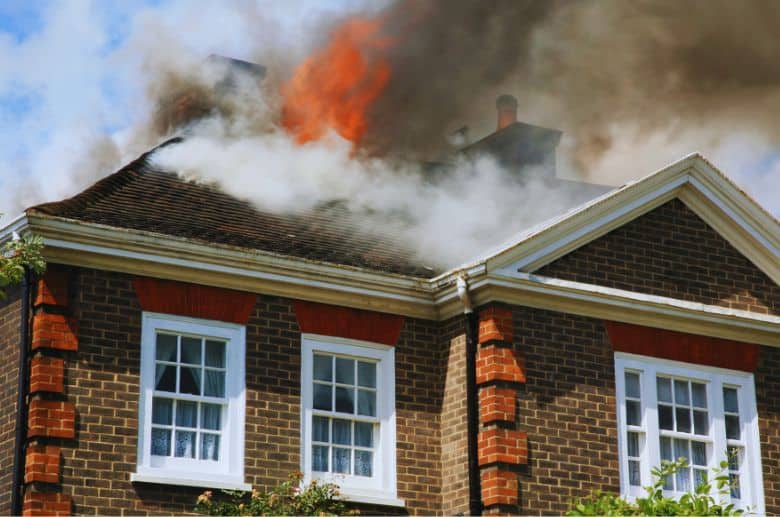
Running any fireplace unattended increases the risk of a house fire. There’s a chance that a slight malfunction causes a spark which may start a fire that can spread throughout the house.
How Do You Use a Gas Fireplace Safely?
By now, you can guess that running a gas fireplace overnight or unattended is not a good idea. But are there any other precautions you can take to operate your fireplace safely and efficiently? Most definitely!
Here are a few things that homeowners need to keep in mind when running their gas fireplaces:
Installation
Always hire a certified professional to install your gas fireplace. Since a gas fireplace uses natural gas as fuel for combustion, there’s always a risk of gas leaks. A professional installer will follow all safety protocols and the manufacturer’s installation procedure.
By having a professional install your fireplace you can rest assured that the risk of malfunctioning, leaking pipes, or other safety issues is minimized.
Annual Inspection
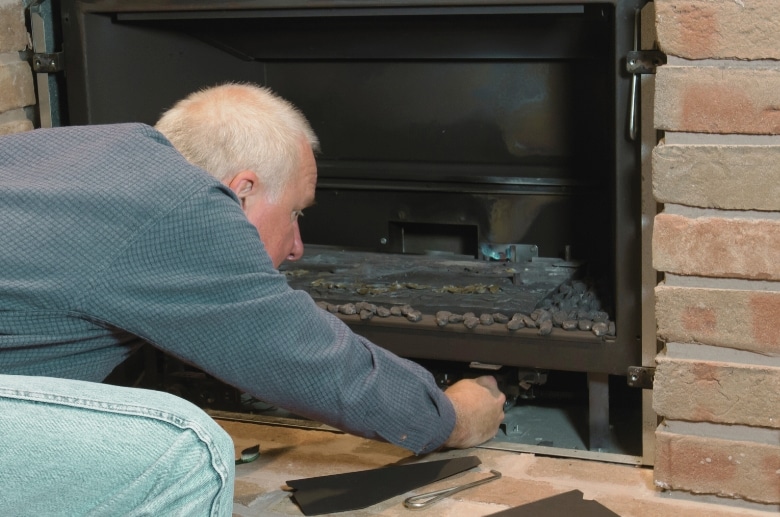
As recommended by the NFPA, the number one safety precaution for gas fireplaces (and all other types of fireplaces) is getting them inspected at least once a year. Annual inspections ensure that all fireplace parts are in proper working condition. Any issues like a gas fireplace that keeps going out or broken parts can be found during these inspections and can be fixed so they don’t become a problem.
Inspecting your fireplace with a certified chimney sweeping service before winter starts is best.
Clean your gas fireplace thoroughly
Vacuum the fire chamber and around any decorative elements like ceramic logs, removing dust, pet hair, debris, and other grime. Don’t forget to clean the front glass screen, using a high-efficiency air filter to reduce indoor pollutants. If any lava rocks and logs show signs of breakage, replace them immediately.
——
Do You Need to Hire Chimney & Fireplace Expert?
Get free quotes from qualified experts near you. No commitment required!
——
Regular Cleaning and Maintenance

In addition to the annual inspections, you should also clean your gas fireplace regularly. This includes cleaning the log sets and other accessories, fireplace glass, etc. It would be best to clean the fans and the air vents to prevent clogs.
While you’re at it, don’t forget to check the CO detector batteries.
3-Foot Rule
Homeowners should keep the 3-foot rule in mind to avoid any fire hazards. The 3-foot rule states that any combustible object needs to be placed at a distance of at least 3 feet.
CO Detectors
CO is not only extremely dangerous, but it is also hard to detect. Installing CO detectors in the most frequented rooms ensures you’ll be prompted if Carbon Monoxide leaks inside your room. You will have enough time to vacate the premises and call the authorities to handle the issue.
Without these detectors, you won’t even realize there’s a leak until it’s too late.
How to Properly Operate a Gas Fireplace with Igniting Key
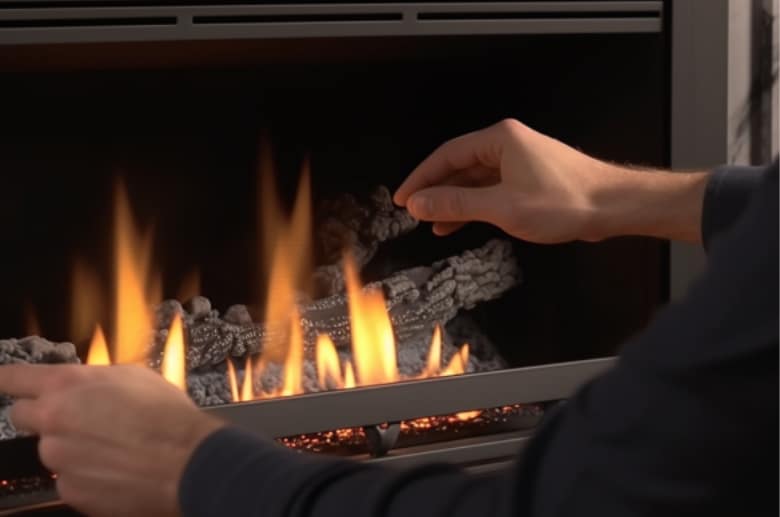
Now comes the fun part – actually operating your gas fireplace! Follow the instructions that come with your unit carefully to ensure a safe and efficient operation. With most models, the basic operation process is pretty simple and looks like this:
- Step 1. Check out the user manual
Every model is different, so you want to make sure you’re familiar with all instructions and safety measures related to yours. - Step 2. Remove the front cover
Open or remove the glass panel separating the fire chamber from the rest of the room. - Step 3. Insert the fireplace key into the gas valve knob
This is usually located to the left or right of the fireplace. Be careful: don’t turn the key until you’ve prepared your lighter to avoid releasing dangerous amounts of gas. - Step 4. Use a long lighter to ignite the burner
Grab a lighter with a longer head to keep your hands away from the fire pit while still managing to ignite it. - Step 5. Turn the gas key half a turn
releasing gas into the fireplace and causing the pilot light to ignite. Be ready to move back quickly if there are any unexpected flares. - Step 6. Replace the front cover
To keep any excess gas from escaping, replace the glass panel securely.
How to Properly Operate a Gas Fireplace with Control Panel
Here are the steps on how to ignite gas fireplace with control key:
- Step 1. Check out the user manual
Just like above, read the user manual for instructions related to your specific gas fireplace.
- Step 2. Access the control panel
This should be located behind the front screen of the unit.
- Step 3. Set the control knob to the off position
This should release any lingering gas in the chamber and provide a safe place to begin ignition. Leave it for at least 5 minutes before continuing with the ignition process.
- Step 4. Double-check your shutoff valve
Make sure the handle is parallel to the gas line, allowing appliance fuel to enter and ignite.
- Step 5. Move the control knob to the pilot position
This will give you access to the unit’s pilot light.
- Step 6. Press down on the knob and ignite using a switch
Holding your finger on the knob hit the ignition switch near it. This should cause your pilot light to ignite.
- Step 7. Hold the control knob down for at least 30 seconds
This will give the safety device a chance to heat up and register that your pilot light is active.
- Step 8. Move the control knob back to the “on” position
To preserve your fireplace’s pilot light, turn the control knob back to the “on” position.
——
Do You Need to Hire Chimney & Fireplace Expert?
Get free quotes from qualified experts near you. No commitment required!
——
Tips for Maximizing Gas Fireplace Efficiency
We don’t want to cut corners on safety, but by following some simple tips, you can maximize gas fireplace efficiency for maximum warmth without taking any unnecessary risks.
Tip 1. Insulate Your Room Properly
Don’t you just hate feeling the draft in your home? Weatherstripping, caulking any cracks and windows, and keeping the doors closed when you’re using the fireplace will help keep the heat generated within the space and prevent any warm air from escaping.
If possible, install weather stripping and caulk around your door frames and windows for a minimal amount of money; this will help close any air leaks to get the most out of your gas fireplace.
Tip 2. Pick the Right Gas Fireplace for Your Room
Just like with an air conditioner, the size of the gas fireplace you choose matters. A typical gas fireplace can heat an average-sized room between 500 to 2,200 square feet.
Ensure the BTUs are appropriate for your space; this will help prevent any energy waste due to your fireplace being too powerful or underpowered.
To calculate the BTU capacity of your room, multiply how many square feet it is by its height. Depending on your climate, your square footage number should then be multiplied by 10-15 for warm climates, 20-30 for moderate climates, and 30-40 for cold ones.
Remember that the BTU ratings aren’t always perfect or universal; some of the efficiency depends on your venting system, room layout, and more.
Tip 3. Choose an Energy-Efficient Gas Fireplace
Looking for a gas fireplace that’s both efficient and aesthetically pleasing? Here are some things to look for:
- Glass-fronted fireplaces – These are more efficient than open-fronts as they prevent warm air from escaping back up the chimney.
- Direct-vent systems – These use a fan to bring air from inside the firebox and expel exhaust back out. They are more efficient than conventional units.
- Star ratings – Look for fireplaces with a high-star rating, as these will cost about the same to run as wood fireplaces.
Tip 4. Regular Inspections
Safety is always the top priority, and keeping your gas fireplace in good working order is essential. Schedule regular inspections with an experienced professional to check the condition of all components, venting systems, and seals. This will help ensure a long life for your gas fireplace and keep you safe from potential risks.
A yearly gas fireplace inspection is essential for all the right reasons. Schedule one whenever possible, as it can help ensure your family’s safety and maximize efficiency during those chilly winter periods.
The Takeaway
How long can a gas fireplace run? A gas fireplace can range from a few hours to continually, depending on your model, fuel type, and ventilation system. With some TLC and a mindful eye toward safety, running a gas fireplace can be an excellent way to add comfort and coziness to your home.
Remember, Leaving your gas fireplace on throughout the night increases the chance of CO poisoning or a house fire. So, regardless of the gas fireplace type, it is best to only run a fireplace under supervision.
Also, ensure you get your fireplace installed by a professional and inspected yearly. This will make sure that your fireplace is working safely and efficiently.






